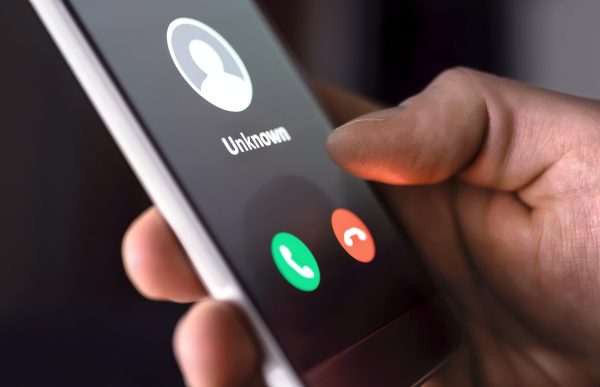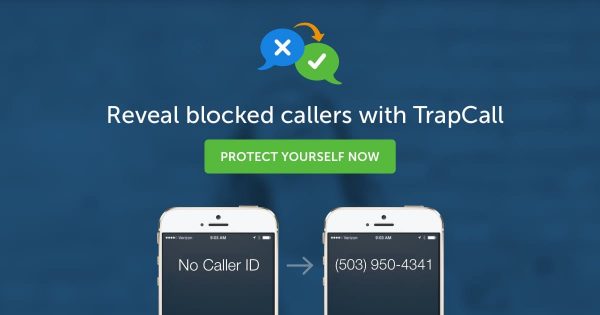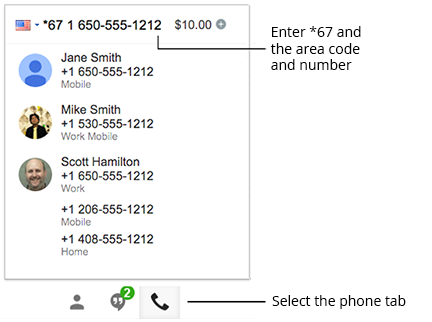When your smartphone beeps, your initial instinct is to check who’s calling you before you answer it. However, what happens when you look at your phone and find out it is a private caller? When a private number calls your phone, their identity and contact information are not visible. It might appear on your screen as Blocked, Private Caller, No Caller ID, Restricted, or Unknown.
You may be skeptical of answering unknown calls or even restricted calls, but if you don’t answer them, you may wonder how to call back a private number later on. For starters, it’s hard to reveal a private number, although not impossible. There are numerous ways to track the caller down and return their call.
Also read: What Is a Restricted Call
Inside This Article
- What Is a Private Number
- How to Reveal and Call Back a Private Number
- Bonus: How to Make Your Number Private
- Other Vertical Service Codes
What Is a Private Number

When a caller ID is empty, it means that the owner has set their phone number to private so you won’t know it’s them. You yourself can also hide your number when calling if you value privacy. Network carriers often offer this service as an add-on that will be charged to your monthly bill. Aside from blocking your number on all your outgoing calls, some carriers also offer the service on a per-call basis.
However, private numbers have a bad reputation, especially from a receiver’s point of view, because it is often used to conduct spam calls, solicitations, and even abusive telemarketing.
How to Reveal and Call Back a Private Number
Although it is allowed for people to block their numbers for privacy and confidentiality, it’s also within your right to uncover the identity behind a private number. If you are getting a lot of calls from a private number lately, here are some ways to view their phone number and call them back.
1. Returning a Private Call for Free Using *69
The first method to uncover an unknown call is through the Last Call Return code; this is North American Numbering Plan Administration’s universal vertical service code (VSC).
You can dial *69 to automatically call back the last number that called you for landlines. On the other hand, you can dial #69 on mobile phones to return the call of the recent private numbers. Also, you must take into consideration that your phone/mobile service provider may set a time limit in returning the private call. It is generally within 30 minutes from the most recent call.
When using this method, you will not obtain the actual phone number of the person who called you but at least you will be able to get in touch with the unknown caller. While there is no assurance that they will answer your call, you can get a voicemail that can provide some clues to their identity.
This method will depend on your phone service provider. For instance, some providers deliver an auto-generated voice that provides you with the number together with the option to make a call. Other phone service providers return the private call and won’t give you the mobile number.
However, this method has a precautionary measure with it before you proceed. It makes problems even worse in rare cases. Some restricted calls are computer-generated calls that aim to confirm if your mobile number is active. The purpose of calling you is to sell your contact information to scammers. As a result, returning a private call notifies the system that you still have an active phone number.
2. Verifying Phone Provider’s Logs
If you are still unsuccessful with your search using Last Call Return, you can opt to check your phone call logs when you receive your monthly statement. Your phone service provider saves a log of your incoming and outgoing calls. There are instances where private-number calls are revealed in these logs. You can search and verify the call records of your mobile and then compare the date and time to your mobile service provider’s usage log. As a result, you can match these pieces of information to reveal the unknown caller’s identity.
The duration of how long these call records or logs are stored differs with each phone service provider. These records are generally saved for one to seven years. It can even be utilized for criminal investigations.
3. Searching Through Reverse Number Lookup

If you’ve traced the private number and want to discover more about it before returning the call, you can perform a reverse phone lookup. Input the number on Google search or through the Yellow Pages to identify if the mobile number belongs to a landline or cellular phone. You can also find the location where the phone is registered using this website.
In some instances, you may be required to pay a fee to receive a full report. The fee can be refunded if the lookup service isn’t able to give any information about the unknown caller.
On the contrary, if you are dealing with a spoofed call, a reverse phone search won’t provide you with the necessary information. However, this, in return, will give you a clue that robocallers or potential scammers are calling you.
4. Using Third-Party Apps to Reveal Private Number Calls

Receiving a constant stream of private-number calls can be annoying especially if you’re living a busy schedule. If you are searching for a method to unmask restricted calls, private numbers, or unknown calls, you can pay for a service such as TrapCall to unmask a private number.
TrapCall is a mobile app that reveals blocked and restricted callers. It provides you with the phone number and the name of the registered owner. Also, it gives you the caller’s address and provides a blacklist option to prevent future calls. You can download TrapCall on your Android and iOS devices through the following channels below.
5. Setting Up Call Tracing to Unlock Private Number Calls
Another method to uncover the real identity behind a blocked, private, or restricted call is to use call tracing or call tracking. Some phone service providers offer a call-tracing service to stop unwanted calls that are threatening, unlawful, obscene, or harassing. After receiving a private call, dial *57 from a landline or a mobile phone and follow the phone company’s voice instructions.
After the tracing attempt is done, a recorded message will inform you if the phone company has successfully traced the address, name, and phone number of the unknown caller. Some telephone service companies provide this service without a charge. On the other hand, others are requiring a small monthly payment for you to avail of it.
This process of unmasking private-number calls isn’t directly helpful. This is due to privacy reasons since the information isn’t provided directly to you. Yet, it is helpful if you’re already being harassed. If an unknown caller is successfully traced at least thrice and you have documented the dates and times that you configured call tracing, you can immediately contact the local law enforcement agency or even your phone company. They can act against these callers from harassing you.
Bonus: How to Make Your Number Private

The *67 Trick
Are you wondering how people hide or block their caller ID? How is it possible to call someone with an unknown number? The answer lies in dialing *67. It is a simple and quick vertical service code that enables you to hide or block your caller ID or number on someone’s phone. As a result, your caller identity is hidden behind an unknown number.
The only method to hide your identity is dialing *67 first before calling someone. It is an easy method that works on any mobile phone or even a landline. Dialing *67 doesn’t work when you are calling emergency numbers such as 911 and toll-free numbers. When your call is successfully made, the receiving end’s caller ID will show “Private” as your number on their phones. If you are wondering how to return a call from a number that recently called you without revealing your identity, dialing *67 is the fastest and easiest method.
Android and iOS Alternative to *67
The behavior of caller IDs hasn’t changed significantly in the past few years. However, smartphones have definitely evolved. That said, you may encounter some mobile phones that do not recognize the *67 feature. The good news is that Android and iOS devices have different ways to make sure your phone calls have the ability to hide your caller IDs when making phone calls.
Hiding Caller ID on iOS Devices
You will need to configure some settings so you can make phone calls that display “Unknown Number” as your caller ID. To do this, perform the following:
- Go to Settings > Phone > Show My Caller ID.
- Toggle Show My Caller ID on to activate this feature.
Hiding Caller ID on Android Devices
Similar to iOS devices, you need to make some changes to your phone’s settings to hide your number when calling. To do this, please follow these steps:
- Launch your Phone app.
- Go to the Search bar on the Phone app.
- Tap the three vertically-aligned dots to access the drop-down Menu.
- Go to Settings > Calls.
- Select Additional Settings > Caller ID.
- Enable Hide Number to activate this feature.
Hiding Your Caller ID Permanently
Dialing *67 is only applicable to masking your caller ID information on the mobile number you are using. If you are wondering how to hide your caller ID on every call you make, you must initially dial those numbers first before calling someone every time. On the contrary, if you want to hide your caller ID in all your future phone calls, you must block your number permanently.
If you have a mobile phone, you should call your mobile or phone carrier to ask how to permanently block your mobile number from caller IDs. As a precaution, this action is not irreversible. That said, your mobile number will display as “Private” or “Blocked” permanently.
Other Popular Vertical Service Codes That Come in Handy
Aside from the vertical service codes mentioned in this article, other codes are compatible with most telephone service providers that you may not be aware of. To check if it’s compatible with your mobile phone, verify with your mobile phone carrier.
- *60: It provides the option to block specific number/s.
- *66: It continuously calls a busy number until the line becomes available.
- *69: This comes in handy for landlines that don’t have caller IDs. It dials the most recent number that called you.
- *70: It temporarily disables the call waiting feature of your phone.
- *72: It activates the call forwarding feature on a specific landline.
- *77: It activates anonymous call rejection, which only permits incoming calls from people with unmasked mobile numbers or caller IDs.
Final Word
We’ve listed all the possible ways how to call back a private number. Whether you will use the Last Call Return vertical service code or purchase a third-party application, unmasking an unknown number or restricted call is easier than ever before. After all, you deserve the peace of mind you need and to only receive calls that are important and necessary. Unmasking private numbers also help you block malicious calls and prevents you from becoming a victim of potential scams that might compromise your important and confidential data.
Is there any other method that you can recommend in unmasking the identity of private-number calls? Have you tried some of the methods that were mentioned in this article? If yes, let us know your firsthand experience in the comments below! If you wish to block these anonymous numbers, learn how to block a phone number here.
